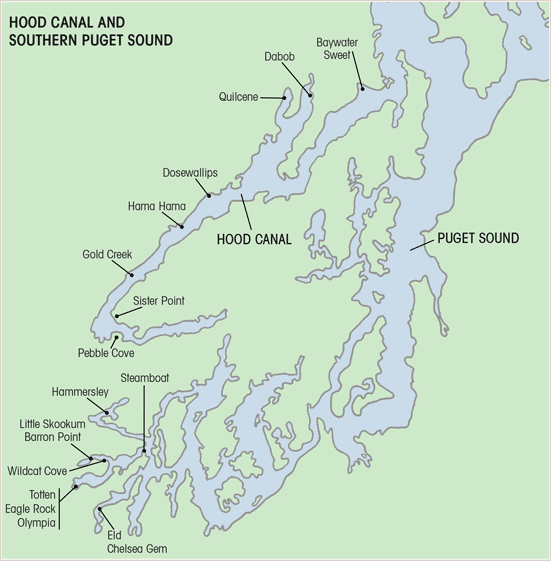Hood Canal and Southern Puget Sound
Skookum
Little Skookum Inlet marks the farthest capillary of Puget Sound. Fed by Lynch Creek, which is stuffed with salmon each fall, it counts the surrounding land as a much stronger influence than the sea. That is one key to understanding Little Skookum oysters; the other is the inlet’s shape. Little Skookum’s basin is a wide, shallow U. It empties completely into Totten Inlet at low tide and is one continuous shellfish bed from shore to shore. Its exposed upstream mudflats, warmed and moist, are a finer algae incubator than any hatchery. When the tide returns, a carpet of green and brown is lifted off the mudflats and pureed in the currents, creating a thick, funky soup that grows fat, buttery clams and oysters. As you might expect from an inlet so shallow and far from the sea, Little Skookum oysters are not salty.
★ Read other reviews of Skookum or post your own at OysteRater.com

